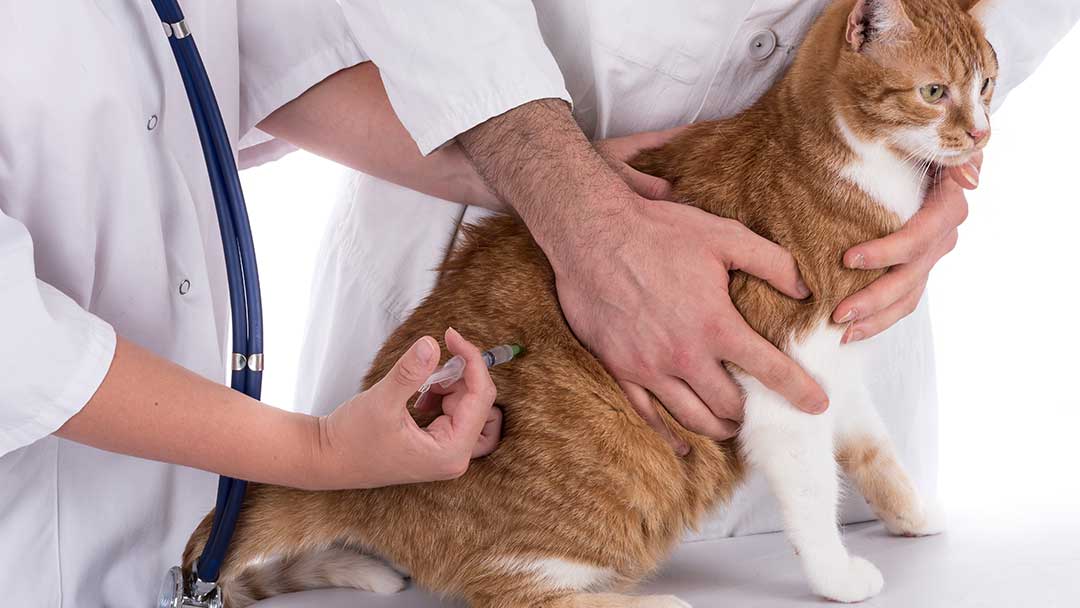
Feline AIDS – the Latest Research
Feline Immunodeficiency Virus (FIV) is an infectious disease caused by a slow-acting RNA lentivirus of the retrovirus family. It is similar to the HIV virus in humans and can be found in domesticated cats as well as lions, tigers, cheetahs and pumas. First discovered in 1986 in a colony of cats in California, it affects between two to four percent of cat population around the world.
FIV is present in the cat’s saliva in large quantities but they cannot become infected via mutual grooming. The virus has been transmitted to kittens from mothers and through sexual intercourse, however these are not major modes of transmission. The most common mode of transmission is via deep bite wounds occurring during fighting. This means free roaming, entire male cats are at the greatest risk.
What Does FIV Do?
FIV attacks the cells of the immune system, leading to feline AIDS (also known as cat AIDS or FAIDS). This compromises the cat’s ability to fight off secondary bacterial, viral, fungal and protozoal infections. There are five known subtypes of FIV occurring in different geographic regions:
- A – USA (west coast), Australia and the UK
- B – USA (east coast), Australia (rarely) and Europe
- C – California, Canada and Taiwan
- D – Japan
- E – Argentina
The disease develops over three stages:
- Acute stage – Once inside the body, FIV is carried to the regional lymph nodes where it replicates in the white blood cells known as T lymphocytes. It then spreads to other lymph nodes throughout the body. During this time, there may be an acute illness characterised by a fever, lethargy and swollen lymph nodes. While this initial stage lasts a few weeks, it often goes unnoticed that the cat is unwell.
- Latent stage – The asymptomatic phase which can last several years. During this time, the cat appears completely healthy and can lead a normal life. However the FIV continues to destroy the T lymphocytes, which are required for the proper functioning of the immune system.
- Final stage – Cats are exposed to a host of infectious pathogens on a daily basis but are protected by their immune system. Once FIV destroys enough T lymphocytes, the immune system loses its ability to fight off opportunistic infections, turning otherwise harmless situations into emergencies.
What are the Symptoms?
Cats show a variety of symptoms across each stage of the disease, some of which require hospitalisation, but they can vary across each case. As discussed, early stage one symptoms include a fever, swollen lymph nodes and lethargy. Later symptoms can include:
- Weight loss
- Vomiting
- Diarrhoea
- Hair loss or poor coat condition
- Pale gums
- Gingivitis
- Conjunctivitis
- Bad breath
- Dehydration
- Stomatitis
- Chronic skin, eyes, urinary tract and respiratory tract infections
- Cancer (look for lumps, bumps and sores that don’t heal)
FIV is diagnosed based on history, clinical signs and a blood test, which detects antibodies to FIV. It is possible to get a false positive if the cat has received an FIV vaccine or is a kitten born to an FIV-infected mother. It’s also possible to get a false negative as it can take several weeks for FIV antibodies to appear in the blood and the cat can stop producing antibodies in the later stages of the disease.
What is the Treatment Process?
There’s no cure for FIV, meaning once a cat has it, it has it for life. The goal of treatment is to provide supportive care to the infected cat. FIV positive cats can live for many years (up to five years after being diagnosed), especially if they are given prompt medical attention and supportive care. Many infected cats live long enough to die of age-related disease without ever showing signs of FIV related illness.
The first step is to keep your cat indoors to reduce their risk of exposure to bacterial, viral, parasitic or fungal infections. Maintain regular veterinary check-ups (at least twice a year) and maintain proper flea and worm control. Ensure the cat enjoys a high-quality commercial diet and a stress-free environment. Blood transfusions, antibiotics, supplements and other drugs may be required depending on the case.
Testing and Preventing FIV in Your Cat
It’s a good idea to have any new cat or kitten entering the household to be tested for FIV by a specialist vet. Even if they are going to be the only cat in the household, it’s important to know their HIV status so you can manage their lifestyle and veterinary visits appropriately and be more alert to any health changes.
De-sexing helps prevent FIV and you can also access and FIV vaccine, which is 81 percent effective. The vaccine is made with A and D subtypes and offers some protection against the B subtype, making it an effective solution in Australia.